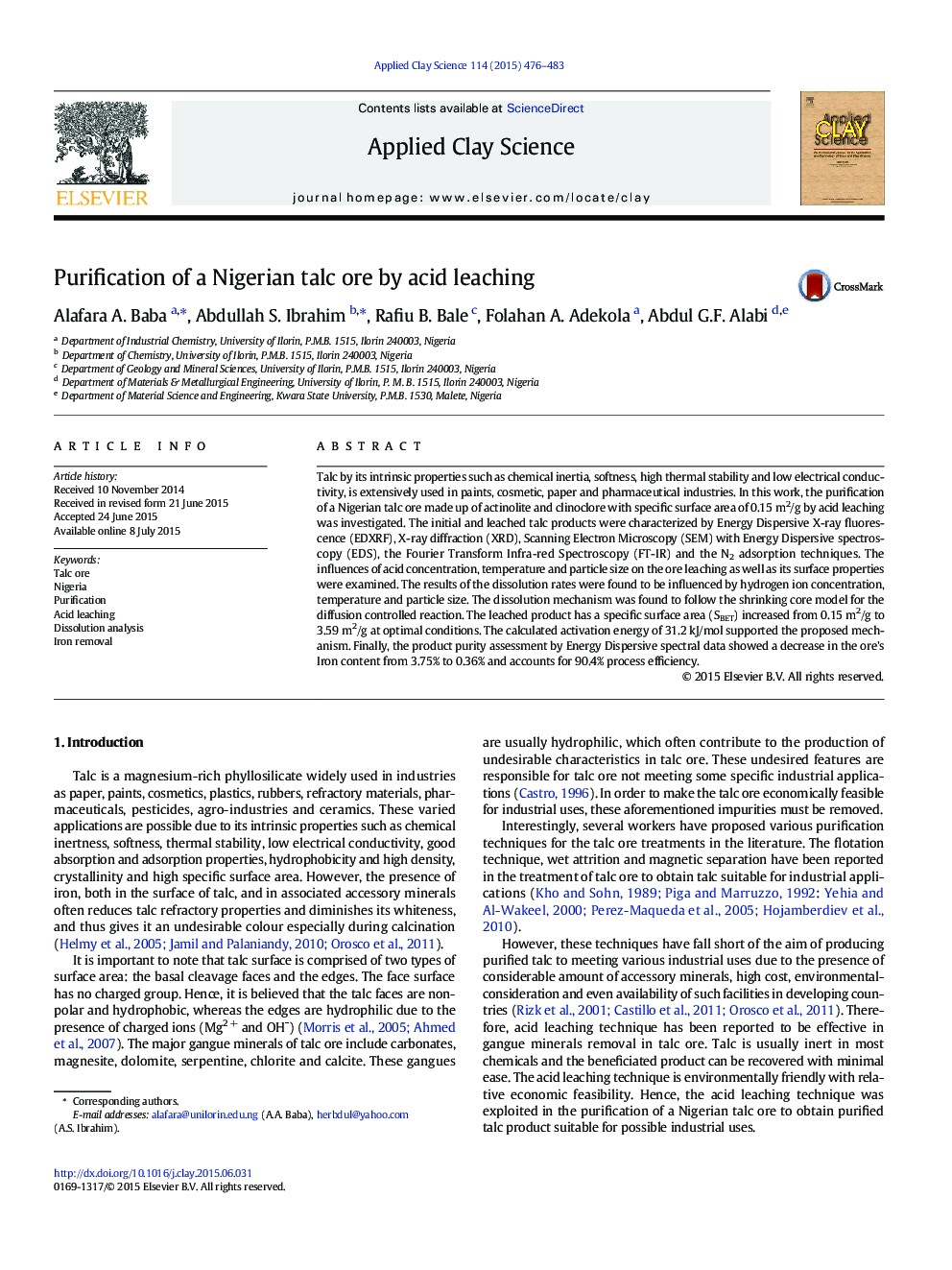| کد مقاله | کد نشریه | سال انتشار | مقاله انگلیسی | نسخه تمام متن |
|---|---|---|---|---|
| 1694399 | 1519067 | 2015 | 8 صفحه PDF | دانلود رایگان |
• A study on the purification of a Nigerian talc ore by acid leaching was examined.
• The initial and leached talc ore were appropriately characterized.
• Specific surface area of the ore increased from 0.15 m2/g to 3.59 m2/g at optimal leaching.
• A process efficiency of 90.4% was achieved for iron removal.
• Hydrophobic tests confirmed the possible impurity removal from the talc surface.
Talc by its intrinsic properties such as chemical inertia, softness, high thermal stability and low electrical conductivity, is extensively used in paints, cosmetic, paper and pharmaceutical industries. In this work, the purification of a Nigerian talc ore made up of actinolite and clinoclore with specific surface area of 0.15 m2/g by acid leaching was investigated. The initial and leached talc products were characterized by Energy Dispersive X-ray fluorescence (EDXRF), X-ray diffraction (XRD), Scanning Electron Microscopy (SEM) with Energy Dispersive spectroscopy (EDS), the Fourier Transform Infra-red Spectroscopy (FT-IR) and the N2 adsorption techniques. The influences of acid concentration, temperature and particle size on the ore leaching as well as its surface properties were examined. The results of the dissolution rates were found to be influenced by hydrogen ion concentration, temperature and particle size. The dissolution mechanism was found to follow the shrinking core model for the diffusion controlled reaction. The leached product has a specific surface area (SBET) increased from 0.15 m2/g to 3.59 m2/g at optimal conditions. The calculated activation energy of 31.2 kJ/mol supported the proposed mechanism. Finally, the product purity assessment by Energy Dispersive spectral data showed a decrease in the ore's Iron content from 3.75% to 0.36% and accounts for 90.4% process efficiency.
Journal: Applied Clay Science - Volume 114, September 2015, Pages 476–483
